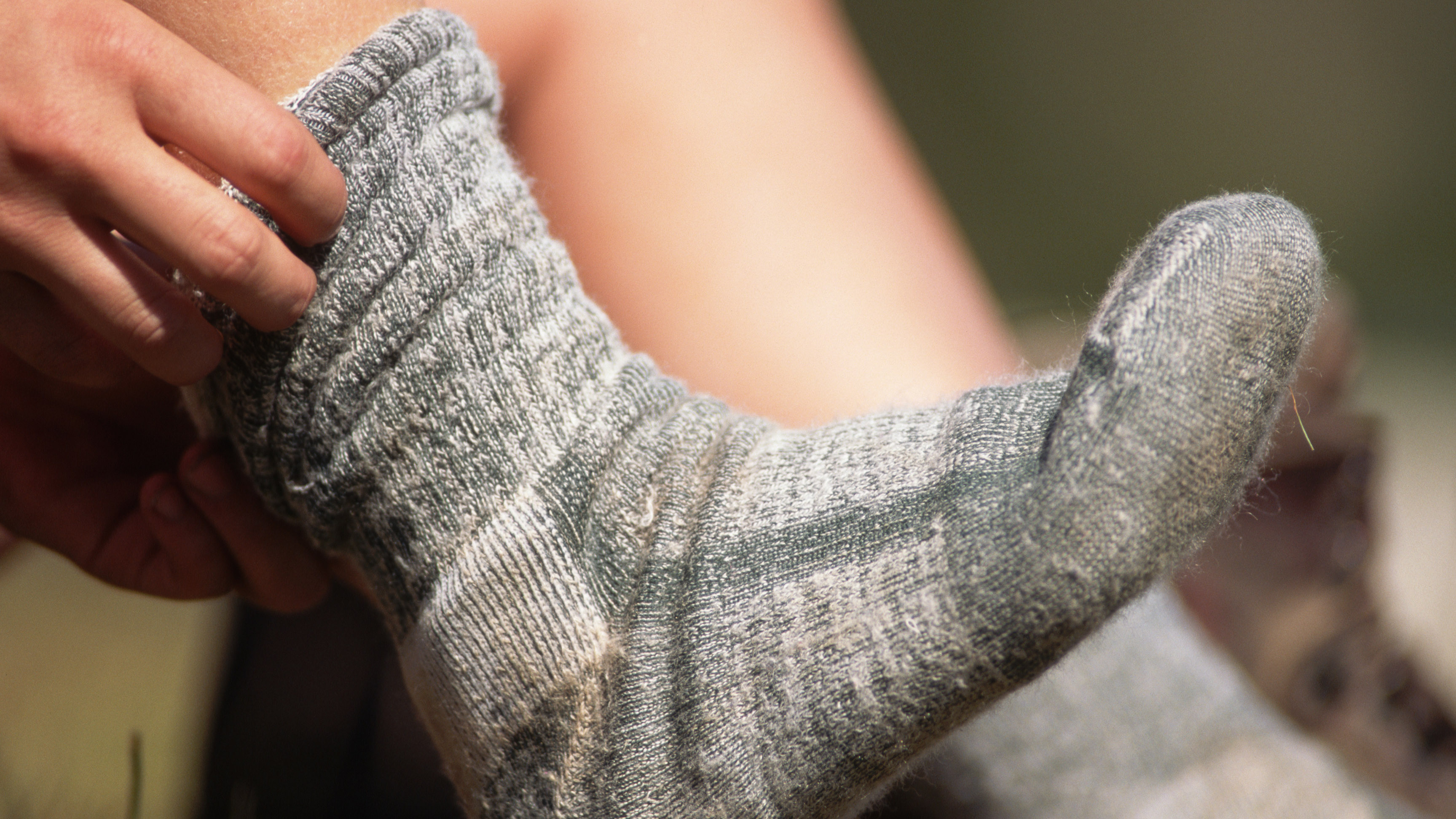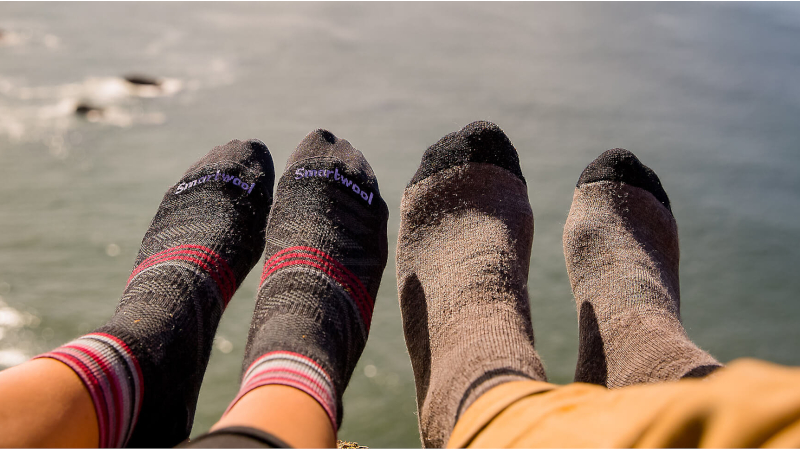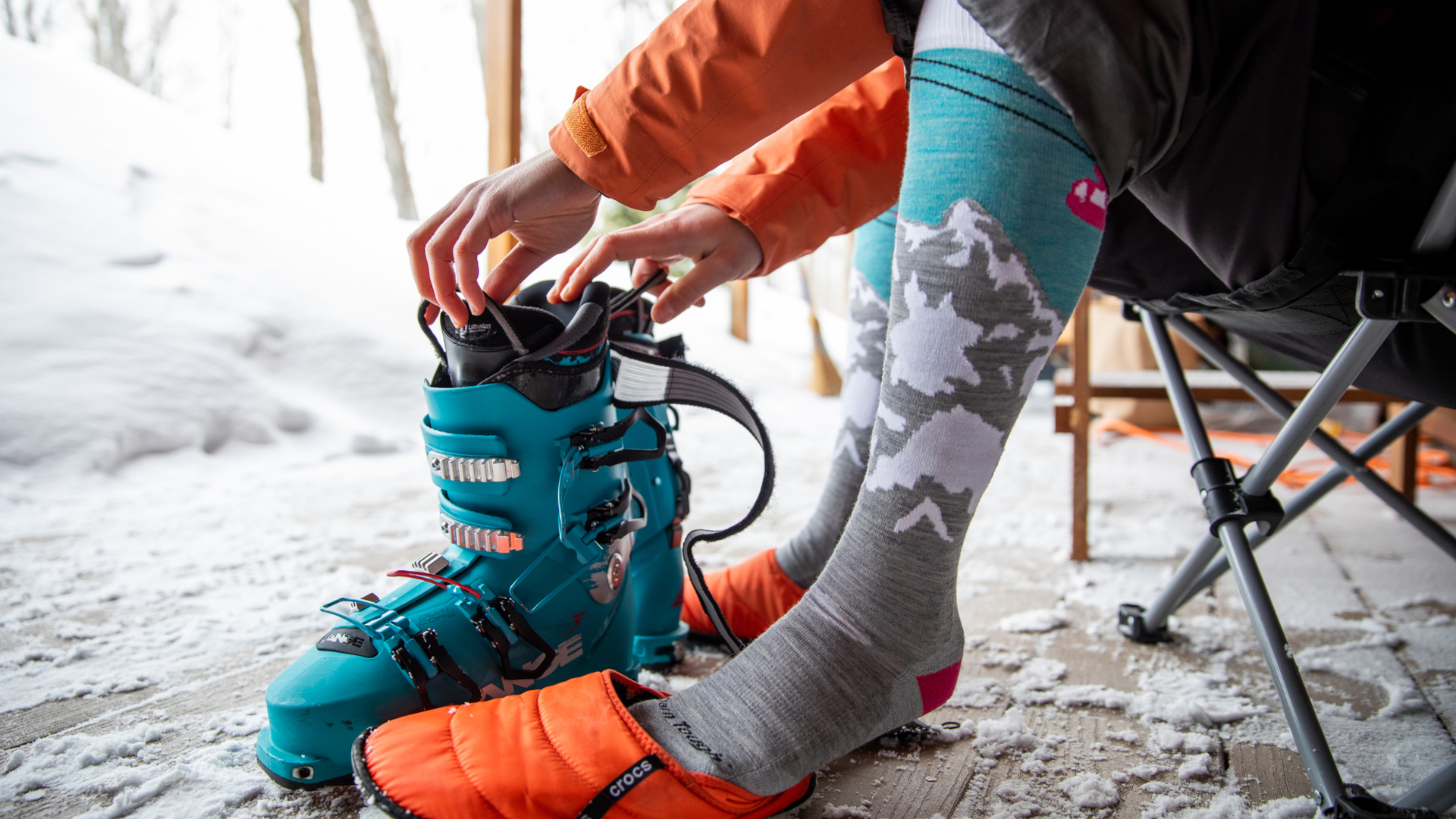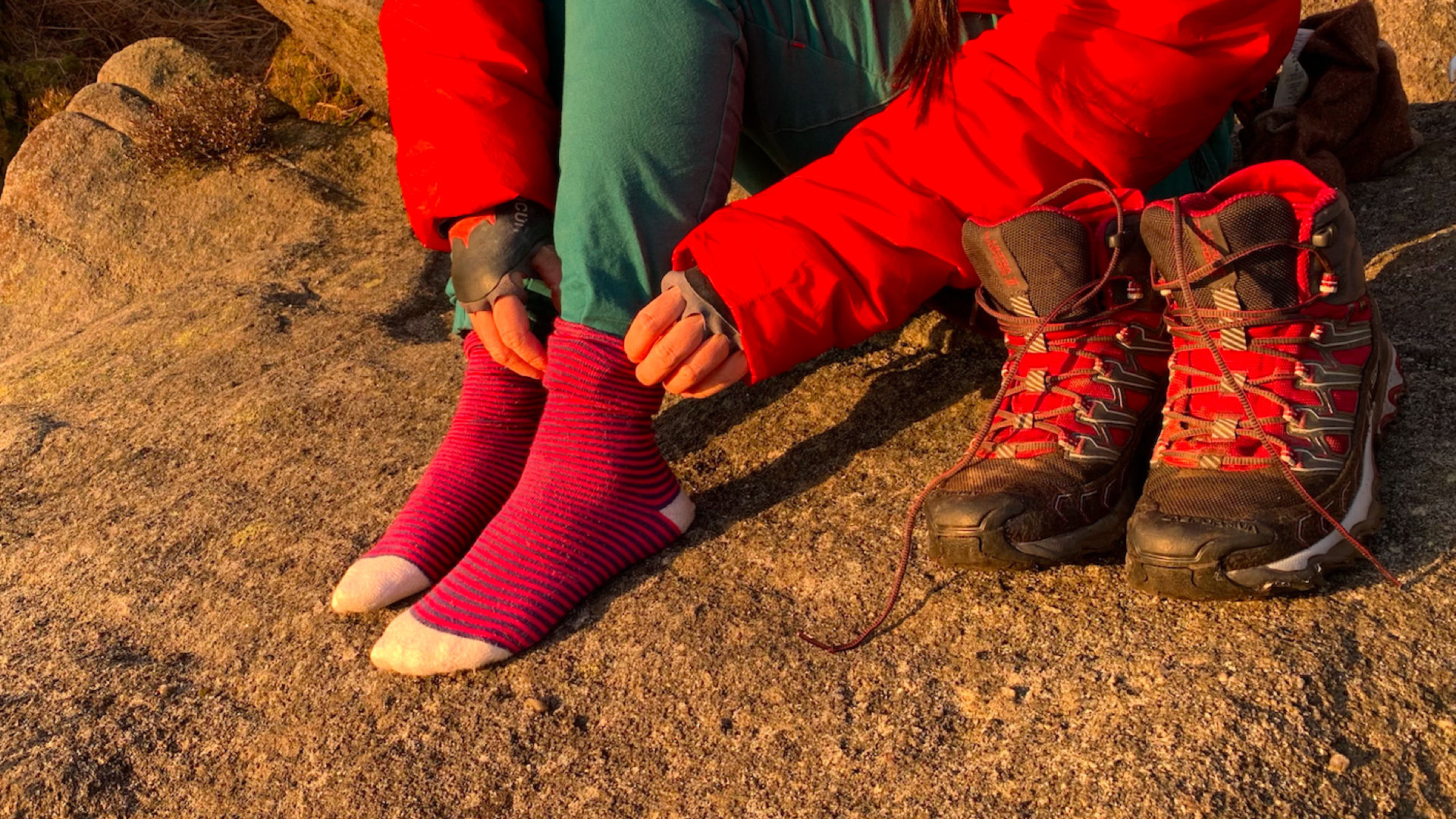Wool vs cotton socks: which is best for outdoor adventures?
Understand the amazing properties of wool, and learn why we think it's the best choice for your expeditions

Whether you’re new to hiking and trail running, or are planning to upgrade your current gear, you might be wondering why there’s such a fuss made over wool socks. Isn’t wool an antiquated, itchy material favored by WWII soldiers and old people? And isn’t it a bit hot for romping around on the trails? You’re not alone in thinking so, but once you’ve read through our comparison of wool vs cotton socks, you’ll understand the amazing properties of wool and why we think it makes the best hiking socks and ski socks and maybe even trail running socks.
Before we get started, let’s just clarify that when we say wool socks, we mean wool blend – and usually a merino wool blend. Merino wool is known for not being itchy at all, and when it’s used in socks, it’s often blended with other synthetic materials like polyester, nylon, elastane and Lycra. This makes them more durable, stretchier, and machine washable. Pure wool socks would be very warm, less durable, itchy and require hand washing, but don’t worry, you’re not likely to come across a pair of pure wool athletic socks.

Wool vs cotton socks: moisture control
Let’s start with a biggie when it comes to socks you’re going to be getting sweaty in – the greatest advantage wool socks have over cotton socks is their ability to wick moisture (aka sweat) away from your skin. Even though it is quite an absorbent material, the surface remains dry to the touch. This serves four useful purposes:
- Avoids uncomfortable, clammy socks.
- Reduces rubbing and blistering.
- Supports your body’s natural cooling mechanism when it’s warm out by drawing sweat off your skin.
- Prevents feet getting cold when in wintery conditions, which can help you avoid hypothermia.
Cotton socks don’t supply any of these benefits. Well, there are cotton socks being manufactured that are more moisture-wicking, but they’re still not as effective as wool socks. In fact, even though cotton is known as a breathable fabric, because it is known to soak up moisture, they’re likely to work the opposite way, giving you uncomfortable, damp feet that feel hot when you’re moving and then leaving you with cold feet when you slow down, plus the possibility of rubbing and blisters.

Wool vs cotton socks: temperature regulation
Just in case we didn’t make it clear in the last point, wool is also very good for temperature regulation. If your only experience of wool socks is big, thick stockings from the early days, you might not imagine that they’re very suitable in hot weather and you’d be right actually. But because wool wicks moisture, it does actually aid in your natural cooling process (sweat needs to evaporate or be wicked away in order to actually cool you down) whereas cotton doesn’t perform this job. Just look for thin wool socks for summer activities.

Wool vs cotton socks: odor control
When you get home from a run wearing cotton socks, you’re going to want to toss them right into the laundry basket, since not only will they be soggy, they’ll also stink. Wool, on the other hand, is surprisingly odor-resistant. There are a few reasons for this, from the way the fibers inhibit bacterial accumulation to the fact that your feet aren’t getting and staying damp in them (which is a breeding ground for bacteria) and then there’s speculation that wool releases odors more effectively when washed than cotton socks do. You’re welcome to go and read up on the science of it all, but ultimately what you need to know is that you can often wear wool socks for hiking for weeks or even months without washing them and they don’t stink.

Wool vs cotton socks: durability
You should expect all of your socks to get holey eventually, especially if you’re wearing them out on the hiking trails, but wool is definitely sturdier than cotton socks, which wear thin, lose their shape and get holes quite quickly in comparison. Your wool socks will last longer, but you’ll still want to know how to repair your socks to get the most out of them. You’ve also got the stink factor to take into account here – because you’re likely to wash cotton socks with every use, they’ll wear out quicker.
All the latest inspiration, tips and guides to help you plan your next Advnture!
Furthermore, if you pick up a pair of Darn Tough socks, such as the Hiker Boot Midweight Sock, they come with a lifetime guarantee so in a roundabout way, they last forever.

Wool vs cotton socks: cushioning
If you’re seeking hiking or ski socks, the chances are that you’ll be looking for those with some cushioning in the areas that take the most wear, such as the heels and balls of your feet, plus your shins for ski socks. Not all wool socks are cushioned, but if they’re made for a particular sport, they usually are. Athletic cotton socks aren’t usually cushioned, however you can find cotton socks with terry cushioning nowadays, though it’s not usually quite as dense or long-lasting as a good pair of wool socks with cushion.

Wool vs cotton socks: price
OK, so you’ve got to be wondering if cotton socks have any actual benefit over wool socks, and the one place where they do win out is in price. A good quality pair of wool hiking socks can set you back upwards for $20. That’s right, for a single pair. Meanwhile, you probably know you can buy a whole pack of cotton socks for a quarter of that price. But of course, since wool socks last longer, in the long run you might end up spending more on those cotton socks after all, so even this one is debatable.
| Header Cell - Column 0 | Wool socks | Cotton socks |
|---|---|---|
| Moisture control | Sweat-wicking | Non sweat-wicking |
| Temperature regulation | Warm in cold temperatures and thin wool blend socks help keep you cool when it's hot | Not particularly warm, but breathable in hot, dry conditions (when you're not sweating) |
| Odor control | Don't get smelly, even with multiple heavy use | Get stinky quickly |
| Durability | Hard wearing | Lose their shape and get holes more easily |
| Cushioning | Can come with athletic cushioning | Can come with athletic cushioning, may be less robust than wool |
| Price | Expensive per pair | Cheap per pair |
Wool vs cotton socks: the verdict
It should come as no surprise that we think wool socks win out over cotton socks for hiking, running and winter sports every time. They keep your feet dry, help regulate your temperature and reduce rubbing, all without getting smelly, whereas cotton socks could really ruin your day from blisters to smelly feet. That said, there are athletic cotton socks on the market that have some moisture wicking properties and padding, so if you’re really not convinced, look for those ones. And of course, if you’re just looking for socks for padding around the house in, there’s no reason why cotton socks won’t do.

What about synthetic socks?
One more question you might be asking yourself is whether you shouldn’t just buy yourself synthetic socks and it's a good question. Synthetic socks are definitely cheaper than wool and they also wick moisture really well, so they’re often favored by runners. They can come with athletic cushioning and are often really durable, too. However, be warned that synthetic materials can become powerfully smelly, so expect to have to wash yours every time or face losing friends.
- Best hiking socks: stay comfortable on the trails and avoid blisters in all seasons
Julia Clarke is a staff writer for Advnture.com and the author of the book Restorative Yoga for Beginners. She loves to explore mountains on foot, bike, skis and belay and then recover on the the yoga mat. Julia graduated with a degree in journalism in 2004 and spent eight years working as a radio presenter in Kansas City, Vermont, Boston and New York City before discovering the joys of the Rocky Mountains. She then detoured west to Colorado and enjoyed 11 years teaching yoga in Vail before returning to her hometown of Glasgow, Scotland in 2020 to focus on family and writing.

